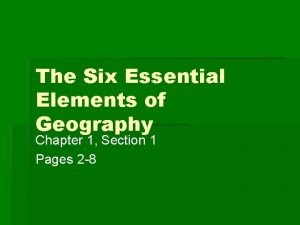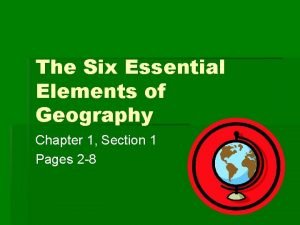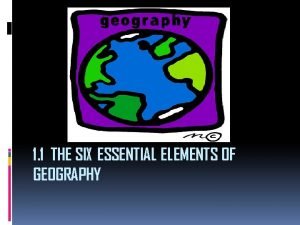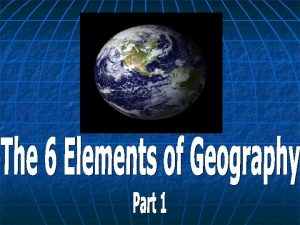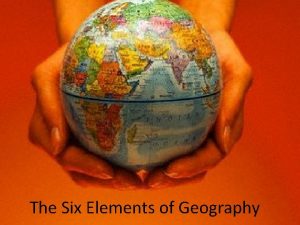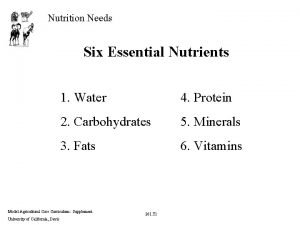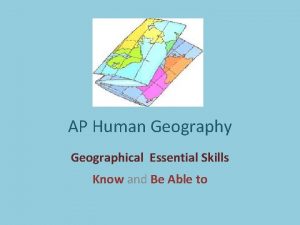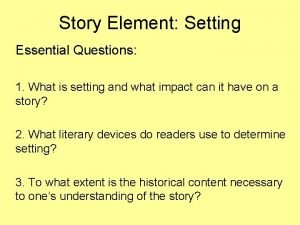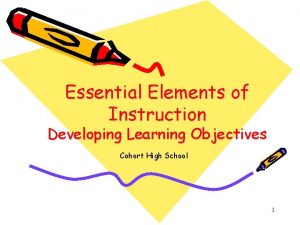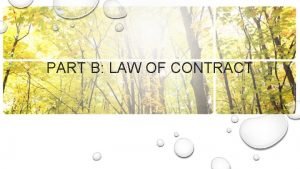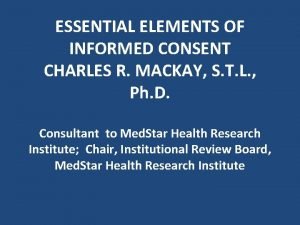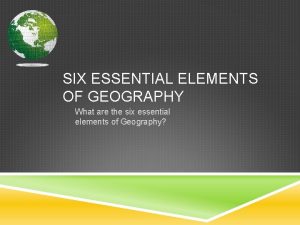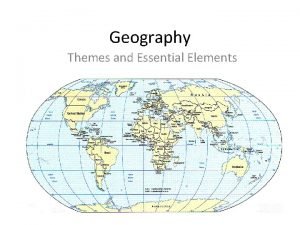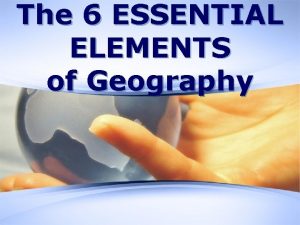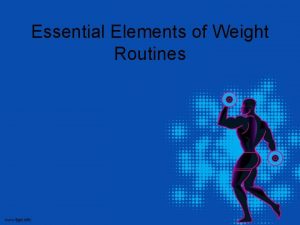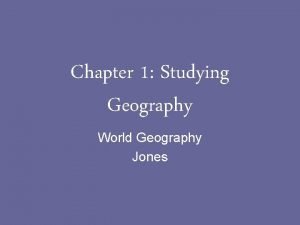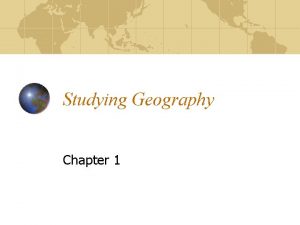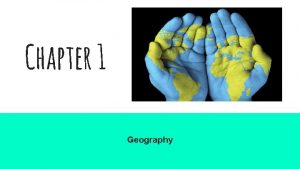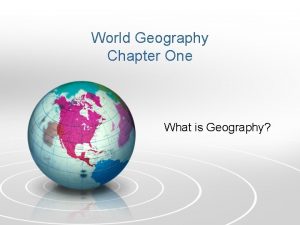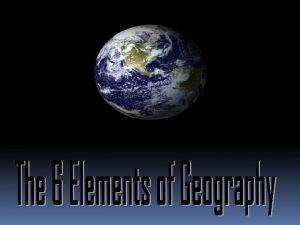The Six Essential Elements of Geography Chapter 1

























- Slides: 25

The Six Essential Elements of Geography Chapter 1, Section 1 Pages 2 -8

What is Geography? § The study of the physical, biological & cultural features of the Earth’s surface.

What is perspective? § The way a person looks at something. § Geographers use spatial perspective. Spatial perspective looks for patterns in where things are located on the Earth & how they are arranged and then geographers try to explain these patterns.

The Two Branches of Geography § Human Geography looks at the distribution & characteristics of the world’s people. § Physical Geography focuses on Earth’s natural environments, which includes landforms, atmosphere, animals, plants, soils, & the processes that affect them.

Subfields of Geography § Cartography – map makers § Meteorology – weather forecasters

How do we study Geography? § We organize information by regions, or areas that share one or more features that make it different from the surrounding areas. § Ex. Cities, states, countries, continents, etc. § Regions are defined by their human & physical characteristics.

The 6 Essential Elements 1. 2. 3. 4. 5. 6. The World In Spatial Terms Places & Regions Physical Systems Human Systems Environment & Society Uses of Geography

#1 The World in Spatial § Terms How to acquire, read, & process information from maps to report information. § Examples?

#1 World in Spatial Terms § How to use mental maps to organize information about people, places, and environments. § What are mental maps?

#1 World in Spatial Terms § How to analyze the spatial organization of people, places, and environments on Earth's surface.

#2 Places & Regions § Looks at the physical & human characteristics of places.

#2 Places & Regions § How people create regions to understand the Earth’s complexity.

#2 Places & Regions § How culture and experience influence people's perception of places and regions. BIBLE BELT

#3 Physical Systems § The physical processes that shape the patterns of Earth's surface.

#3 Physical Systems § The characteristics and spatial distribution of ecosystems on Earth's surface.

#4 Human Systems § The characteristics, distribution, and migration of human populations on Earth's surface. § Why do people live where they do?

#4 Human Systems § The characteristics, distributions, and complexity of Earth's cultural. § Looks at language, religion, music, dance, etc. § Where are these cultures located? § How do they help make up the Earth’s culture?

#4 Human Systems § The patterns and networks of economic interdependence on Earth's surface.

#4 Human Systems § How forces of cooperation and conflict among people influence the division and control of Earth's surface.

#5 Environment & Society § How human actions the physical modify environment.

#5 Environment & Society § How physical systems affect human systems.

#5 Environment & Society § The changes that occur in the meaning, use, distribution, and importance of resources.


#6 Uses of Geography § How to apply geography to interpret the past. § “You can’t understand history without understanding geography. ” § To apply geography to interpret the present and plan for the future.

#6 Uses of Geography § What are some uses of Geography? 1. _______ ___ 2. ________ _ 3. ________ _ § What are some professions that incorporate Geography? 1. _______ ___ 2. ________ _ 3. ________ _
 Element of geography
Element of geography 6 elements of geography
6 elements of geography Six elements of geography
Six elements of geography Www.mrdowling.com
Www.mrdowling.com Six essential elements of geography definitions
Six essential elements of geography definitions Six elements of geography
Six elements of geography Characteristics of lipids
Characteristics of lipids Six essential nutrients
Six essential nutrients Geographical data ap human geography definition
Geographical data ap human geography definition Classify each polygon
Classify each polygon Essential elements standards
Essential elements standards Essential elements michigan
Essential elements michigan Second party audits
Second party audits 25 elements essential to life
25 elements essential to life The portable phonograph questions and answers
The portable phonograph questions and answers Essential elements of instruction
Essential elements of instruction Characteristics of portfolio assessment
Characteristics of portfolio assessment The essential elements of partnership
The essential elements of partnership Slidetodoc
Slidetodoc Essential elements of informed consent
Essential elements of informed consent Frq ap human geography format
Frq ap human geography format 5 themes of geography ap human geography
5 themes of geography ap human geography Proruption ap human geography
Proruption ap human geography What are the six elements of drama?
What are the six elements of drama? Interior design objective
Interior design objective What are the 6 elements of art
What are the 6 elements of art
